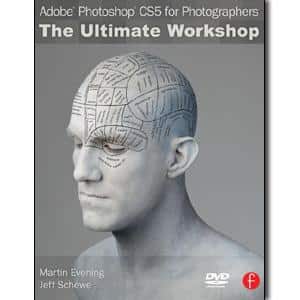Description
ISBN 9781138819184; Paperback
322 Pages
Wig Making and Styling, 2nd Edition
A Complete Guide for Theatre & Film
By Martha Ruskai, Allison Lowery
Book Description
Wig Making and Styling: A Complete Guide for Theatre and Film, Second Edition is the one-stop shop for the knowledge and skills you need to create and style wigs. Covering the basics, from styling tools to creating beards, it ramps up to advanced techniques for making, measuring, coloring, and cutting wigs from any time period. Whether you’re a student or a professional, you‘ll find yourself prepared for a career as a skilled wig designer with tips on altering existing wigs, multiple approaches to solving wig-making problems, and industry best practices.
Table of Contents
Chapter 1: Wig-Making Terms, Tools, and Techniques
Glossary of Wig and Hair Terms
Wig-Making Tool Kit
Wig Styling Tool Kit
Hairpins and Clips
Rollers/Curlers
A Well-Equipped Wig Area
Handling a Wig
Blocking a Wig
Blocking Hard-Front Wigs
Blocking Lace-Front Wigs
Basic Hand Sewing Stitches
Chapter 2: Wig Application and Removal
Hair Prep
Long Hair
Nylon Wig Caps vs Fishnet Wig Caps
Short Hair
Prepping for Film
How to Hold and Put on a Lace-Front Wig
Applying Hard-Front Wigs and Falls
Removing Wigs After a Performance
A Word About Quick Changes and Tap Dancing
Chapter 3: Care and Maintenance of Wigs
Cleaning Wig Laces
Cleaning Facial Hair
Touching up a Wig
Washing Wigs
A Note About Hair Washing Products
Washing the Wig off the Block
Washing the Wig on the Block
Storing Your Wigs
Storage Systems
Chapter 4: Wig-Making Basics: Learning to Ventilate
Ventilating Needles and Holders
Loading Your Needle
Wig-Making Laces and Nets
Fronting Laces
Back/Foundation Laces
Stretch Laces
Other Wig-Making Materials
The Direction and Stretch of the Lace
Types of Hair
Basic Wig-Knotting/Ventilating Technique
Double Knotting
Ventilating Positions
Hair Density and Ventilating Patterns
Ventilating Direction
Untying Knots
Color Blending
Sewing with Invisible Thread
Hair Punching
Chapter 5: Taking Accurate Measurements
Proper Head Measurements
Transferring Head Measurements to a Block
Plastic-Wrap Head Tracings
Padding Out a Block with a Plastic Tracing
Chapter 6: Facial Hair
Creating the Pattern for the Facial Hair Piece
Tracing method, free hand method, & stock paper patterns
Adding Texture to the Hair
Individual Hairpiece Characteristics
Eyebrows
Mustaches
Sideburns
Beards and Goatees
Cutting and Styling the Facial Hair
Applying the Facial Hair
Removing the Facial Hair
Direct Application Techniques Hair
Laid On Facial Hair
Floating Beards
Historical Timeline of Facial Hair Styles Gallery of Natural Facial Hair
Chapter 7: Working with and Adapting Commercial Wigs and Weft
Cleaning Old Wigs
Bringing Back the Shine of an Old Wig
Dulling the Shine of a New Synthetic Wig
Removing Weft
Thinning a Wig with Thinning Shears
Sewing Weft to the Underside of a Wig
Adding Weft to Wigs
Sewing Weft to a Pre-Made Foundation
Piecing Together Wigs
Full Bottom Wig
Piecing Together Wigs to Increase Size
Styling Tricks to Conceal the Front Edge of a Wig
Using the Performer’s Own Hair to Conceal the Front Edge of the Wig
Chapter 8: Fronting Wigs
Fronting and Other Adaptations of Commercial Wigs
Types of Fronts
The Human Hairline
Changing the Hairline
Building the Fronts
Variation 1
Variation 2
Variation 3
Truing the Hairline
Lace Direction and Hair Growth Direction
Quick Front: A Step-by-Step Example
Standard Front
Deep Fronts
Deep Front Variation 1
Variation 2
Variation 3
Mini Fronts
Silk Blenders
Nape Lace
Chapter 9: Building a Wig From Scratch
Types of Foundations
Building a Circumference-Band Foundation
Vegetable Net & Caul Net/Circumference Band/Right-Side-Out/Hand Sewn
Variations on Circumference Band Foundations
Variations on Nape-Piece Foundations
Variations on One-Piece Foundations
Notes About Adding Hair
Parts, Crown Swirls, and Cowlicks
Miscellaneous Foundations
Balding Wigs
Fringes
Sewing Weft to a Pre-Made Foundation
Summary
Chapter 10: Partial Wigs, Toupees, and Hairpieces
Toupee
Graying Temple Pieces
Pull-Throughs
Falls
Type 1
Type 2
Type 3
Type 4
Switches
Kabuki-Inspired Lion Wig
Making Custom Weft
Using Weft to Make Clip-In Extensions
Chapter 11: Wig Styling Techniques
Elements of a Hairstyle
Straight Hair
Wetting and Drying
Flat-Ironing and Roller Setting
Steaming the Hair
Wavy Hair
Finger Waves/Water Waves
Marcel Waves
Pin curls
Waving and Crimping Irons
Curly Hair
Roller Setting
Roller Setting: Ringlets/Sausage Curls
Roller Setting: Spiral Rolling Techniques
Spiral Curls/Medusa Set
Braids
The Standard Basic Braid
French Braids
Reverse French Braid
Rope Braids
Herringbone Braids
Dreadlocks
Chapter 12: Creating a Hairstyle
Break the Hairstyle Down into Sections
Understand the Hairstyle
Interpreting Research
Draw Your Setting Pattern
Set Your Wig
Comb Out the Set
Teasing and Stuffing
Wire Frames
Styling Men’s Wigs
Wig Setting and Styling Tips
From Set to Style: Examples
Example 1: Cosette in Les Miserables
Example 2: 1930s Hollywood Movie-Star Look
Gallery of Historical Hairstyles
Chapter 13: Choosing, Cutting, Coloring, and Perming the Hair
Dyeing Wigs and Wig Fibers
Universal Hair Color Systems
American Cosmetology Hair Level System
Types of Hair Color Products
Dyeing Protein Fibers
Using Fabric Dyes
Preparing Hair Bundles for Dye
Dyeing Synthetic Fibers
Perming Wigs and Wig Fibers
Cutting Wigs
Chapter 14: Hair that Isn’t Hair: Wigs Made from Other Materials
Bases and Foundations
Fosshape™ Bases
Buckram and Felt Bases
Other Types of Bases
Covering the Cap
Building a Structural Support Frame
Combining Hair and Non-Hair Materials
Working with Jumbo Braid
Example of the Step-by-Step Process of Creating an Unusually Shaped Wig
Gallery of Non-Hair/Fantasy Wigs
Chapter 15: The Business Of Wigs and Hair
Analyzing and Understanding the Play
Forms of Drama
Basic Plot Structure
Scene Breakdowns
Organizing Your Production Bible
Character Design
Group Relationships
Designing an Overall Look for a Production
Budgeting for a Production
During the Production
Wig Jobs and How to Get Them
A Note About Unions, Licenses, and Certifications
Charging for Your Work
Appendix 1: Wig Resource/Supply List
Appendix 2: Blank Forms for Shop Use
Index
Biography
Martha Ruskai’s thirty year career as a freelance wig and makeup artist and designer includes opera, film, print, TV, and dance. When not in the theatre, she can be found at dog shows, agility, and water trials with her Portuguese Water Dogs.
Allison Lowery is the Wig and Makeup Specialist for Texas Performing Arts at the University of Texas — Austin and the author of the Historical Wig Styling books. She has previously worked at the Alabama Shakespeare Festival, Utah Shakespeare Festival, the Lyric Opera of Chicago, and Glimmerglass Opera, among many others. She is also an active freelance wig stylist, makeup artist, and wardrobe stylist. Please visit her website at www.thewigmistress.com to keep up with her many projects.






Reviews
There are no reviews yet.